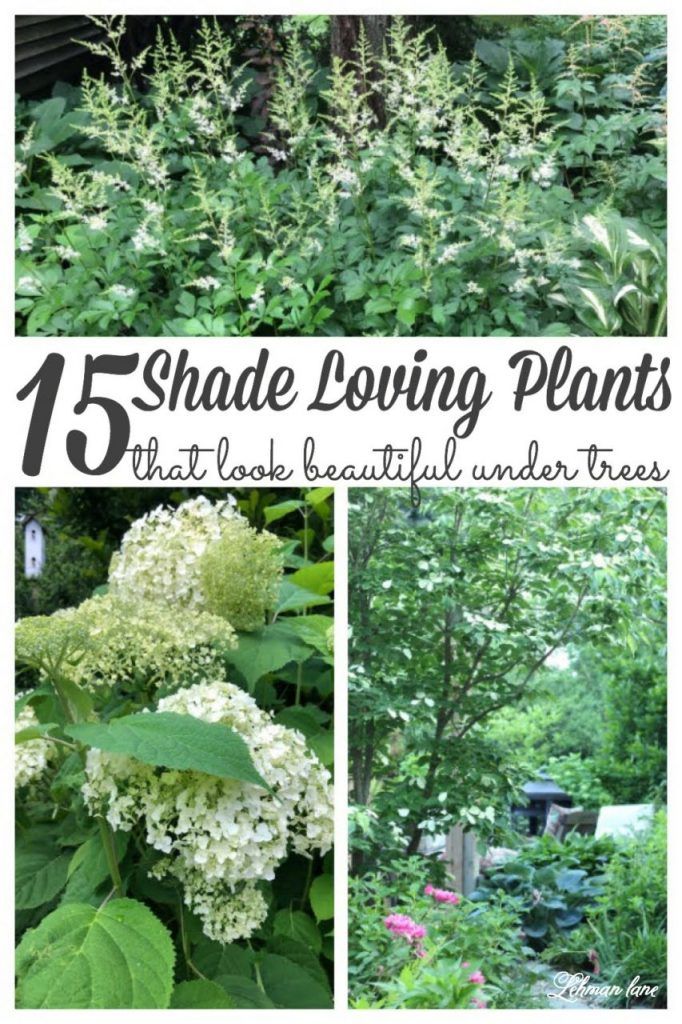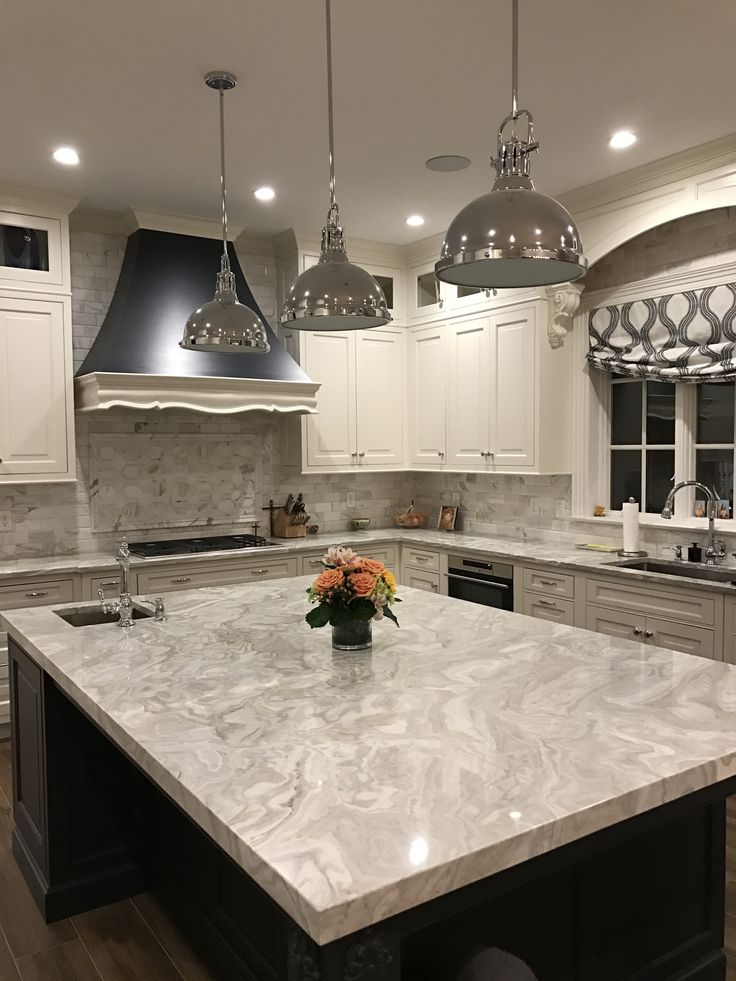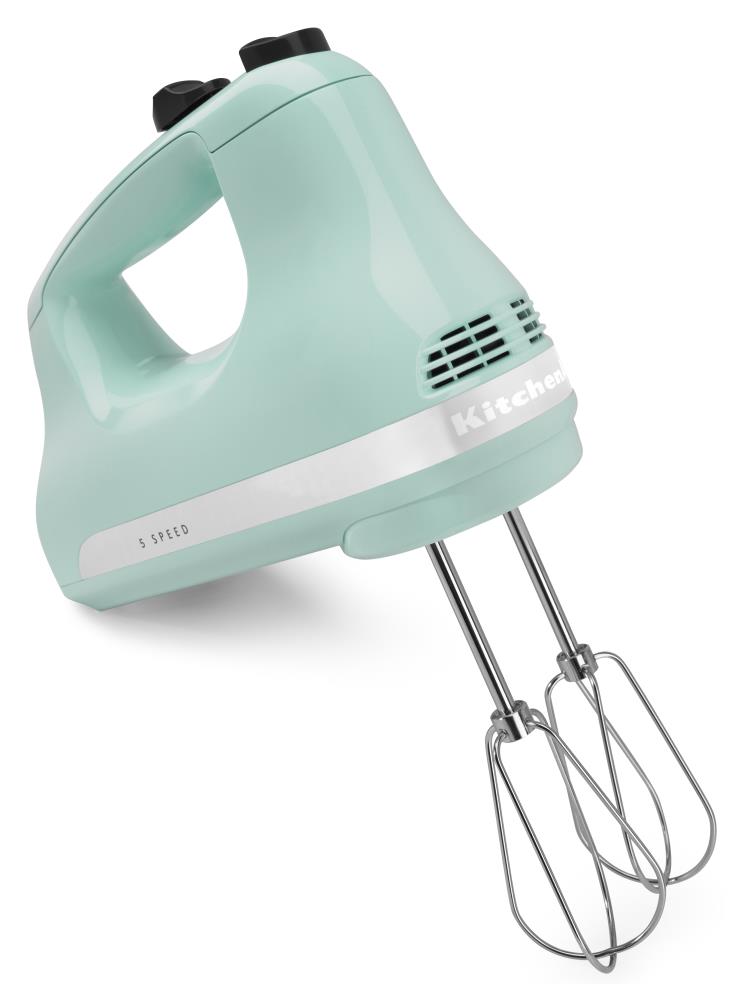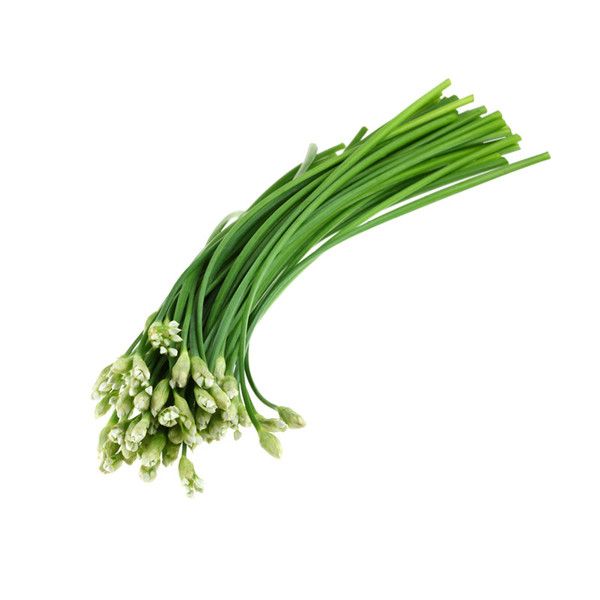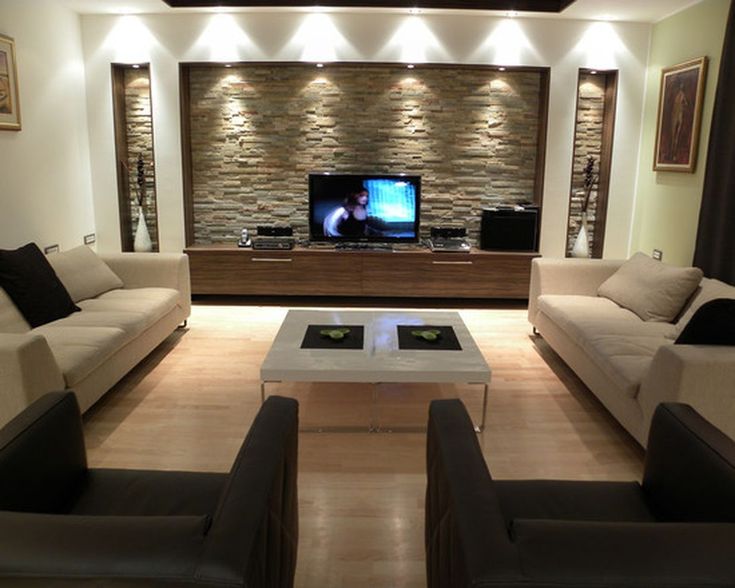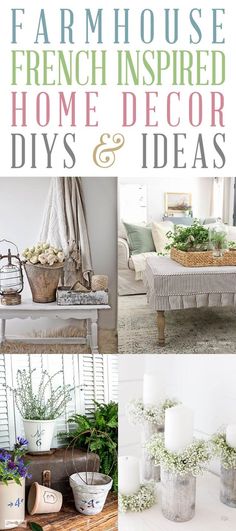What are the best shrubs for shade
Shade Loving Shrubs: The Best Bushes To Plant Under Trees
Do you have a tree in your yard and don’t know what to do with the empty space underneath? Well, I’m here to tell you that there are plenty of shade loving shrubs that thrive under trees! In fact, many of them actually require those shady spots in order to grow well. So whether your landscape has full shade or partial shade, read on for some recommendations.
If you’re like me, you have a few trees in your yard and are always looking for plants that will thrive under their shady conditions.
The space between taller trees and low growing perennials lends itself to an array of blooming bushes and interesting foliage plants.
In fact, by growing a variety of shade tolerant shrubs, this shady area is the ideal place for plants that provide all-season interest.
I rely on the glorious flowers of rhododendrons, azalea and mountain laurel in the spring, the magnificence of hydrangeas in the summer, Japanese maple foliage in autumn, and evergreen foliage and bark in the winter.
And those are just a few of the available options. Keep reading to find the best shrubs for shade that you can plant under trees.
Flowering shrubs
When I’m planting in the shade, I’m always looking for ways to add some color that brightens it up a little.
So I love shrubs for shade gardens that have beautiful blooms.
Luckily there are more of them than you might think! Here are some of my favorite flowering shrubs for shade.
This post may contain affiliate links. We make a small commission if you buy the products from these links (at no extra cost to you). As an Amazon Associate, I earn from qualifying purchases. But we only recommend products we would use ourselves. For more information, click here to see our disclosures.
Zones: 5 to 8
Light: Shade to part shade
Bloom Time: Early spring
Height: 3′ to 10′ (depending on the variety)
Spread: 3′ to 10′
Pieris Japonica is a shade tolerant evergreen shrub with leaves that start out red, then change to pink and cream before becoming lime green.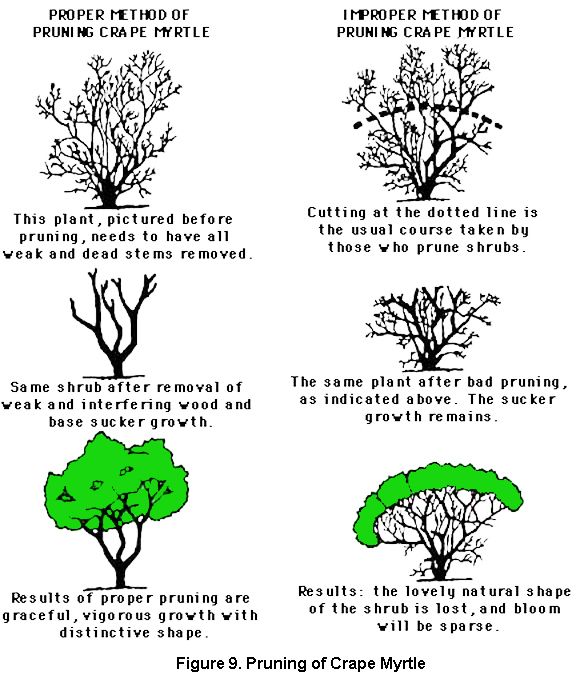
It likes acidic, well drained soil which is characteristic of many of the shrubs that grow well in shade.
Pieris Japonica ‘Forest Flame’When planted with rhododendrons, azaleas and yews, the bright green leaves add contrast and interest to your garden all year.
In early spring, the stems are crowned with white or pink star-shaped clusters.
Learn more about growing Pieris Japonica HERE.
Buy it HERE*.
Zones: 3 – 11
Light: Full shade to part sun
Bloom Time: Late Spring to Early Summer
Height: 3′ to 12′ tall (depending on the variety)
Spread: 3′ to 12′ tall
Another fabulous late spring/early summer bloomer is the Mountain Laurel (Kalmia latifolia).
It is another one of the evergreens for shade that prefers acidic soil, sheltered conditions, and mulch for moisture retention.
The pink blooms take your breath away with their beauty.
Learn more about growing Mountain Laurel.
Buy it HERE.*
Rhododendron ‘PJM’Zones: 4 to 9
Light: Shade to part shade
Bloom Time: Spring
Height: 3′ to 12′ (depending on the variety)
Spread: 3′ to 12′
As long as the soil conditions are acidic and regular moisture is provided, rhododendrons are the perfect flowering shrub for the mid-story. They thrive in the dappled shade under trees, but can grow in full or part shade.
Rhododendrons need shelter from winds and the sun, and require little or no pruning.
Mulch is important to protect the shallow roots and replace nutrients in the soil.
I like the contrast in shape of the broadleaf evergreen leaves among the needled yews.
Rhododendron’s range of colors and spring bloom times provide a succession of fabulous blossom from April to June.
When the early Rhododendrons are covered in magenta or fuchsia flowers, my heart sings and my soul recovers from the blight of winter.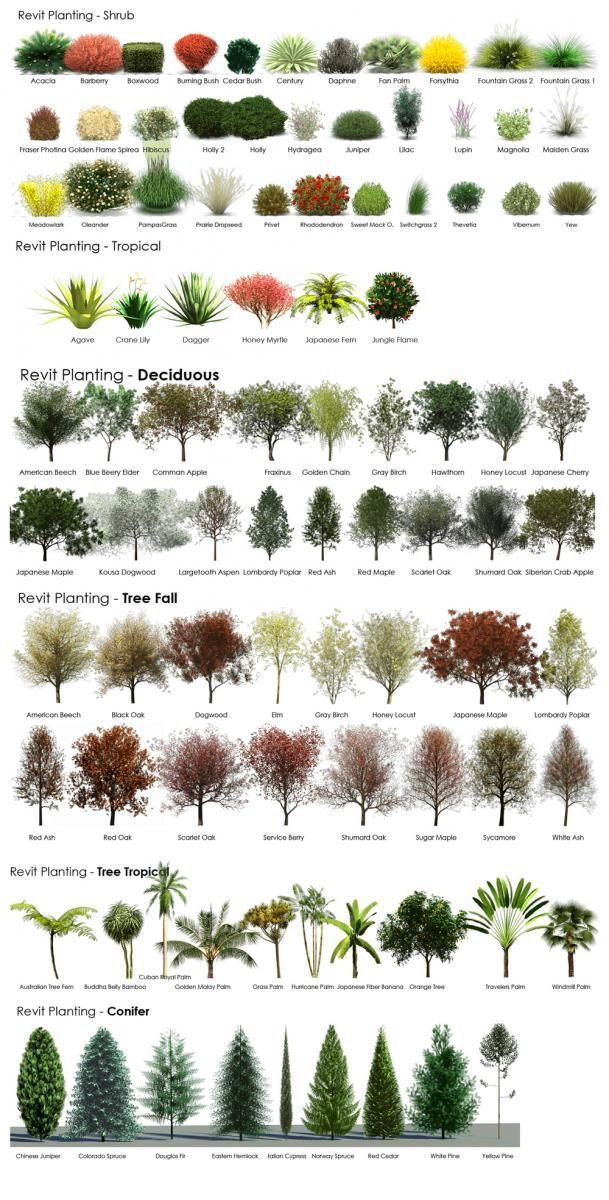
Get some tips on growing Rhododendrons.
Buy them (including the purple one) HERE.*
4 | Azalea
Zones: 2 to 9
Light: Partial shade to sun (depending on the variety)
Bloom Time: Spring, some re-bloom in the Fall
Height: 2′ to 6′ tall
Spread: 2′ to 4′ wide
Azaleas are members of the Rhododendron family and have the same acidic soil and protected growth requirements. And also make the list as one of the best shrubs for shade.
The difference is that azaleas are generally smaller plants and can be either deciduous or evergreen bushes.
Northern Lights AzaleaThe Northern Lights series is tough, no care and (as the name suggests) is bred to survive the cold.
Their blossoms precede their leaves in spring and are a joy to behold.
Encore Azalea ‘Autumn Twist’The Encore series is evergreen and not as hardy, but blooms a second time in the fall.
They are available in a wide range of colors.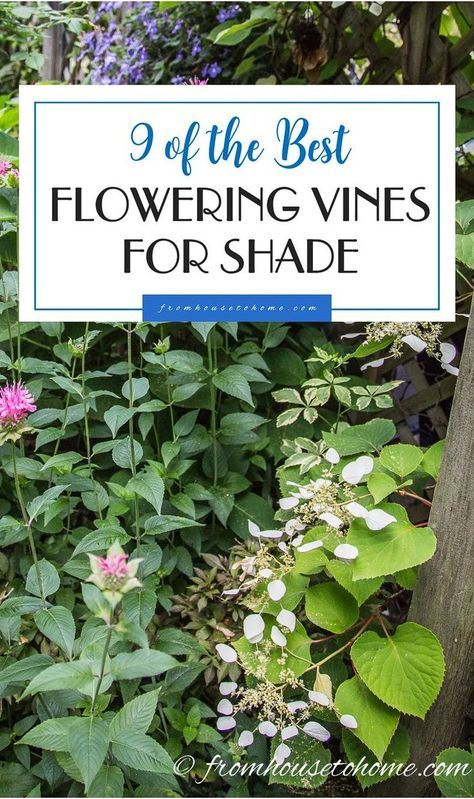
‘Bollywood’ is an evergreen variety that has variegated leaves with pretty red to fuchsia flowers.
Azalea ‘Gibraltar’ ©Peter Turner Photography – shutterstock.comAnd there are even a few Azaleas with bright orange flowers like this one called ‘Gibraltar’ (you can find it HERE*).
In my opinion, no spring garden should be without these bright, glorious flowering shrubs.
Buy them HERE.*
Zones: 4 to 8
Light: Partial shade
Bloom Time: Spring
Height: 3′ to 8′ (depending on the variety)
Spread: 3′ to 6′
Unlike their full-sun cousins (perennial peonies), Tree Peonies (Paeonia suffruticosa) thrive in the dappled shade under trees.
This deciduous flowering shrub likes acidic to neutral soil.
A much tougher plant than it looks, it is definitely low maintenance – requires only regular watering and mulching.
Tree peonies produce huge luncheon plate sized ruffled flowers in mid-spring. I counted 15 blossoms on the tree peony ‘Pluto’ (as seen in the picture above) in my front shade border this year.
I counted 15 blossoms on the tree peony ‘Pluto’ (as seen in the picture above) in my front shade border this year.
Learn more about how to grow tree peonies.
You can find a lot of different varieties for sale (including ‘Pluto’) HERE.
6 | Shade Hydrangeas
Zones: 3 to 9
Light: Partial shade
Bloom Time: Summer to Fall
Height: 3′ to 5′ (depending on the variety)
Spread: 3′ to 5′
Big green leaves and prolific magnificent blooms describe this entry in our shrubs for shade list.
Hydrangeas, as the name (hydra) implies, need to be kept well watered.
They are deciduous bushes that blossom from July through September.
The pruning care requirements are dependent on the type.
Hydrangea macrophylla (bigleaf, hophead, lacecap, and florist hydrangea) should only have dead and weak stems removed immediately after the blooms fade.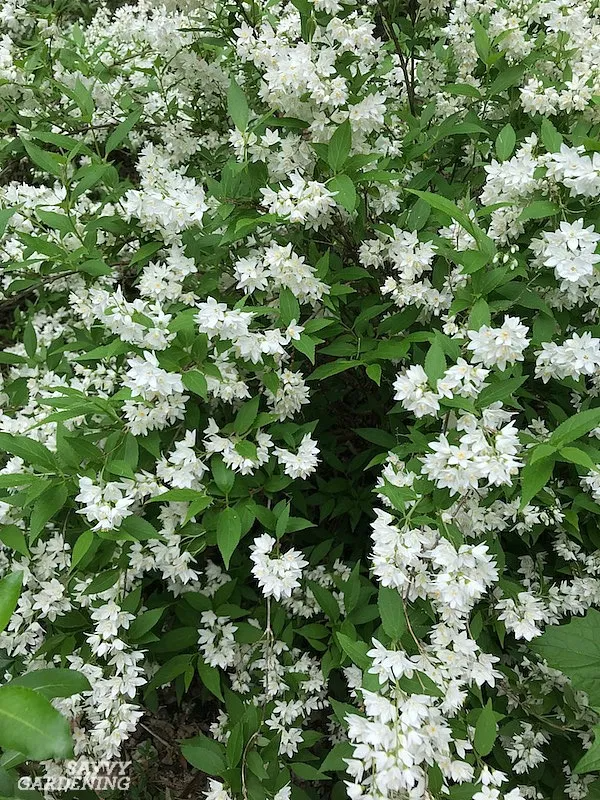 Otherwise, it will not flower next year.
Otherwise, it will not flower next year.
It blooms on old wood, so resist the urge to trim the dead looking stems in the spring!
With the exception of the white bloomers, and some new introductions (e.g. ‘pistachio’), the color of Hydrangea macrophylla flowers is dependent on the pH of the soil—blue in acidic and pink in alkaline.
Buy Hydrangea macrophylla HERE.*
©hcast – stock.adobe.comOakleaf Hydrangea (Hydrangea quercifolia) is an understory plant indigenous to the southeastern United States and is poplar in the home garden border for its all-season interest.
Its distinctive oak-shaped leaves turn bright red in the fall and the exfoliating bark of its stems is interesting in the winter and early spring.
It likes acidic soil and needs no pruning.
Buy Oakleaf Hydrangea HERE.*
Note: While most Hydrangea varieties do well in the shade, Hydrangea paniculata grows better in the sun, so be sure to check what kind you are buying.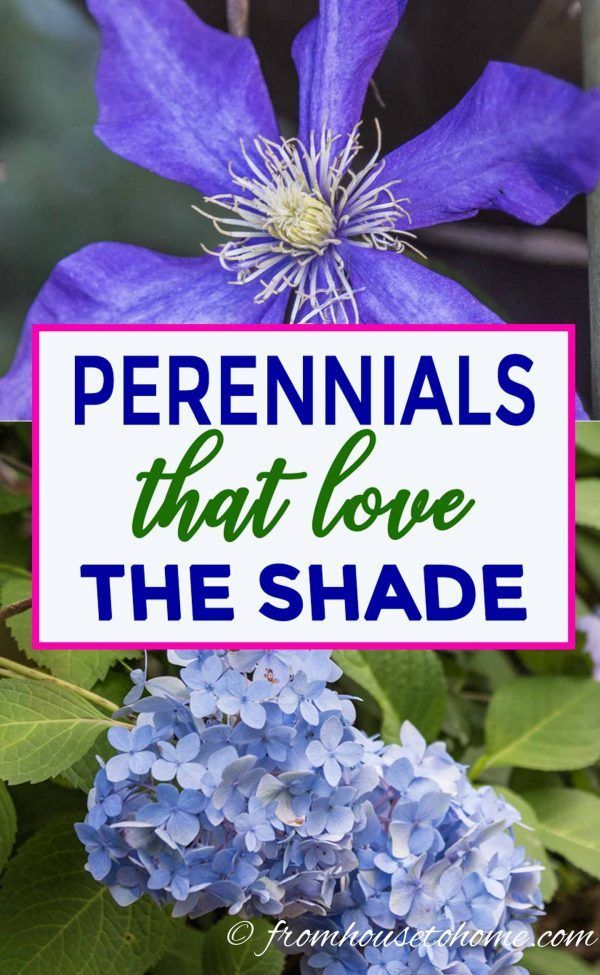
Get some tips on how to get the best blooms from your Hydrangea.
Zones: 6 – 10
Light: Partial shade to shade
Bloom Time: Fall, winter, or spring (depending on the variety)
Height: 18″ to 25′ tall
Spread: 18″ to 8′ wide
Camellias are another of the evergreen shrubs that grow well in the shade.
The big difference with this bush is the time of year that it flowers. Depending on the variety, it can bloom any time between October and April. And those blooms are stunning!
Even better? Once established, Camellias require very little maintenance to keep them healthy.
Learn how to grow Camellias.
Buy them HERE.*
Zones: 5 to 10
Light: Shade to part shade
Bloom Time: Late winter to early spring
Height: 3′ to 5′
Spread: 3′ to 5′
Next on our list of shrubs for shade is Daphne.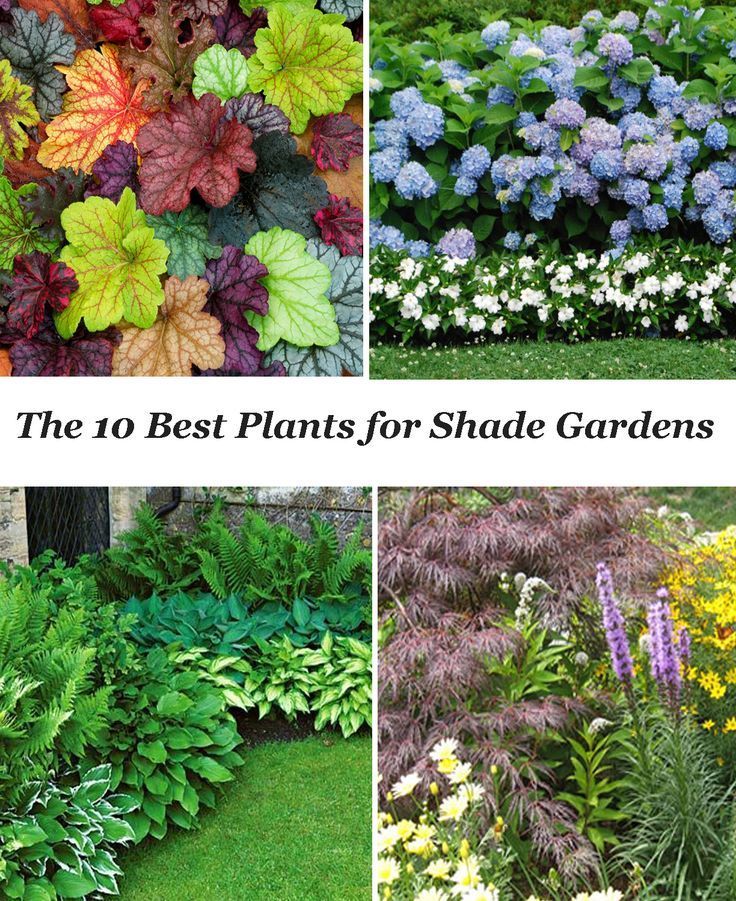
Most varieties have evergreen leaves and produce pink or white fragrant blooms in late winter or early spring.
In my garden, it’s one of the plants that lets me know spring is coming. When I open the front door and can smell the Daphne’s perfume (even before I see the flowers), I know winter is almost over!
It can be a little tricky to get started, but once it is established, Daphne is a very low maintenance plant.
Find out more about growing Daphne.
Buy it HERE.*
9 | Virginia Sweetspire (
Itea virginica)Zones: 5 to 9
Light: Shade to sun
Bloom Time: Late spring, early summer
Height: 3′ to 8′ (depending on the variety)
Spread: 3′ to 8′
Virginia Sweetspire is a native shrub with long fragrant white flowers (that pollinators love!) and gorgeous autumn foliage in the fall.
It is easy to grow in pretty much any garden conditions – dry, wet, poor soil, shade or sun.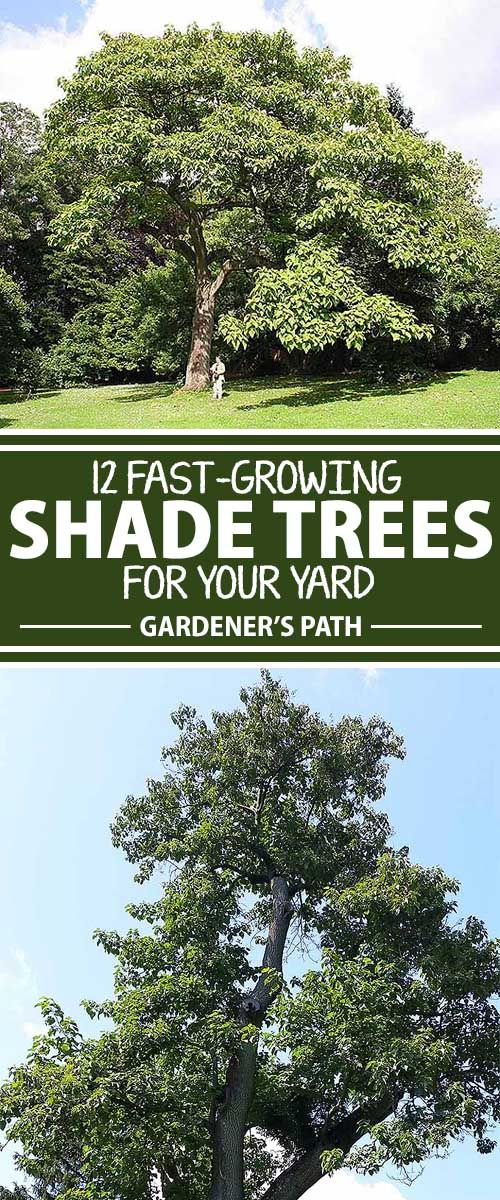
Look for the dwarf variety ‘Little Henry’ if you want one that doesn’t take up a lot of space in your garden.
Buy it HERE.*
10 | Viburnum
Zones: 2 to 9
Light: Partial shade
Bloom Time: Spring
Height: 1′ to 20′
Spread: 6′ to 10′
Viburnum is a very versatile deciduous shrub that always seems to work itself in to my garden plans.
With its huge white blooms that look like snowballs hanging off the branches, it definitely makes a statement!
For planting under trees, look for smaller varieties (such as Korean Spice) that won’t outgrow the space.
Buy it HERE.*
11 | Spotted Laurel (
Aucuba japonica)©simona – stock.adobe.comZones: 7 to 9
Light: Shade
Bloom Time: Spring
Height: 6′ to 10′
Spread: 6′ to 10′
Spotted Laurel is a broad leaf evergreen bush that makes a great hedge or back-of-the-border shrub in deep shade.
It produces clusters of maroon flowers in the spring that turn into bright red berries if you have both a male and female version planted together.
But most people grow it because of its beautiful foliage.
Even without the flowers and berries, this shrub’s gorgeous green and yellow leaves add interest to your deep shade garden.
Buy it HERE.*
12 | American Witch Hazel (Hamamelis virginiana)
Zones: 4 to 8
Light: Partial shade
Bloom Time: Late fall to early winter
Height: 10′ to 20′ tall
Spread: 15′ to 20′ wide
American Witch Hazel (Hamamelis virginiana) is a large deciduous shrub with clusters of citrus-scented yellow flowers that appear in the late fall and early winter.
As the name suggests, it is a native bush to North America. And like many native plants, it is low maintenance, fairly deer resistant and disease resistant once it is established.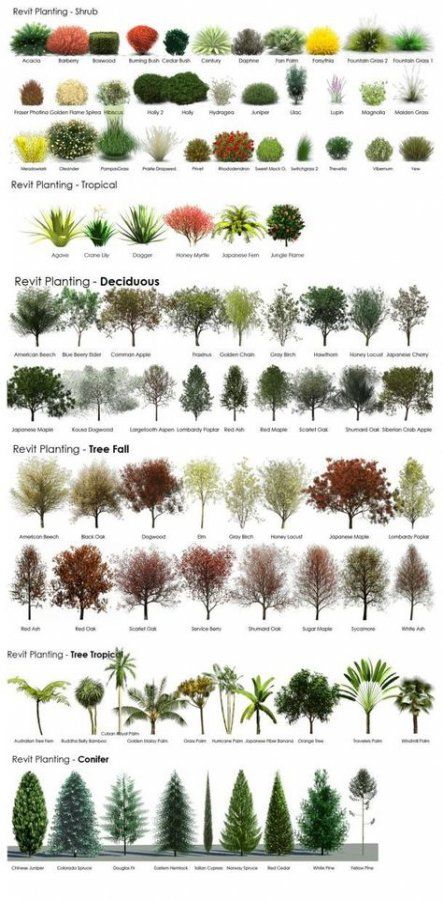
Although Witch Hazel grows quite large naturally, it can be pruned to keep it smaller. This should be done before summer starts to prevent cutting off the buds.
Buy it HERE*.
13 | Red Twig Dogwood (
Cornus Alba)Zones: 3 to 8
Light: Partial shade to shade
Bloom Time: Spring
Height: 8′
Spread: 8′
The red twig dogwood (Cornus Alba) is a shade loving shrub with very attractive variegated gray-green deciduous leaves that provide a bright light in the shaded border.
It has insignificant small white flowers in the spring, followed by white berries, but the compelling reason to plant this shrub is for the winter interest of its red stems.
It can be most appreciated if planted in front of a window where the splash of red in the snow only needs a cardinal to complete a perfect vignette.
The red twig dogwood can be kept small and brighter by pruning out 1/3 of the old stems in the winter, otherwise, it will reach 8’ tall.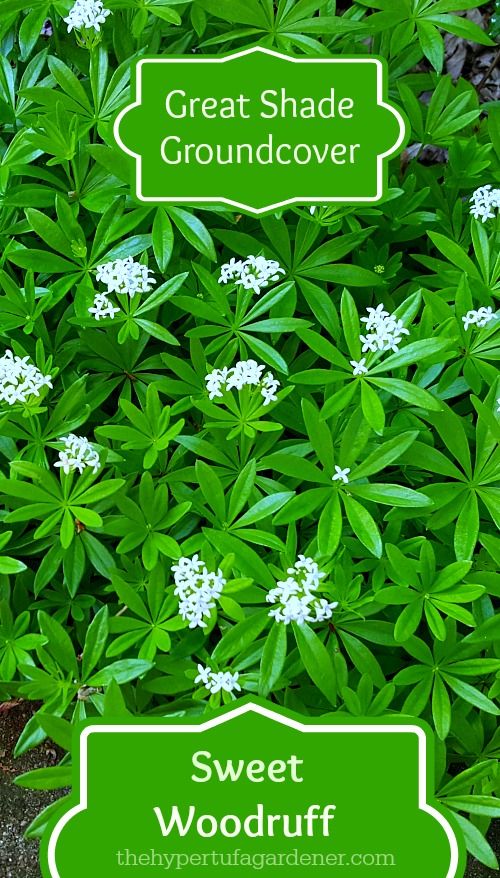
Buy it HERE.*
Foliage Bushes
While flowering bushes are beautiful, to have a lush, relaxing shade garden, shrubs that are known for their foliage are also a must.
With the different leaf textures and colors, they add interest to your yard for the whole growing season.
Zones: 5 to 9
Light: Partial shade
Bloom Time: Foliage only
Height: 6′ to 25′ (depending on the variety)
Spread: 6′ to 25′
Japanese Maples (Acer palmatum) are dwarf trees that create outstanding focal points in the shady border under trees.
My front border is anchored by two other Acers, one at each corner of a curved path.
Although they are different varieties of Japanese maple, the foliage provides focal interest and intense color.
They like dappled shade and do not like to dry out, so provide a deep layer of mulch.
Prune, if necessary, in summer after the leaves are established.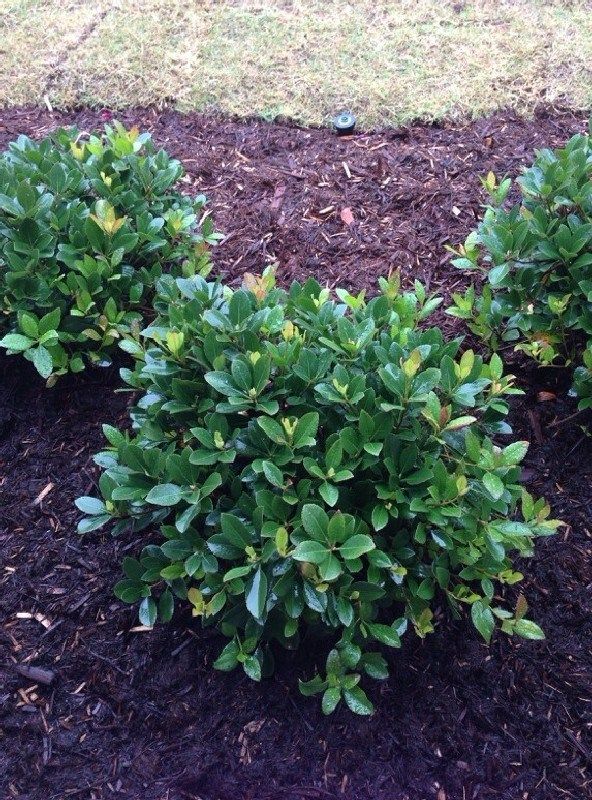
I love the way my cut leaf ‘Crimson Queen’ forms a canopy of scarlet lacy foliage from spring until fall. Even in the winter, the branches arch dramatically.
Find out more about growing Japanese Maples.
Buy them HERE.*
15 | Yews (
Taxus)YewZones: 4 to 9
Light: Partial shade
Bloom Time: Foliage only
Height: 1′ to 25′ (depending on the variety)
Spread: 3′ to 25′
Yews (Taxus) are very reliable drought tolerant evergreens for shade that have inch long needles and red berries in the fall.
Unlike conifers, they don’t mind being pruned, so their size and shape can be easily maintained.
But if you don’t want to do diligent pruning, avoid ‘Hills’,’ Hicks’, and ‘Browns’ yews because they grow too large for a border.
Yews provide all season interest and stand out in the winter garden as a green respite among the deciduous branches.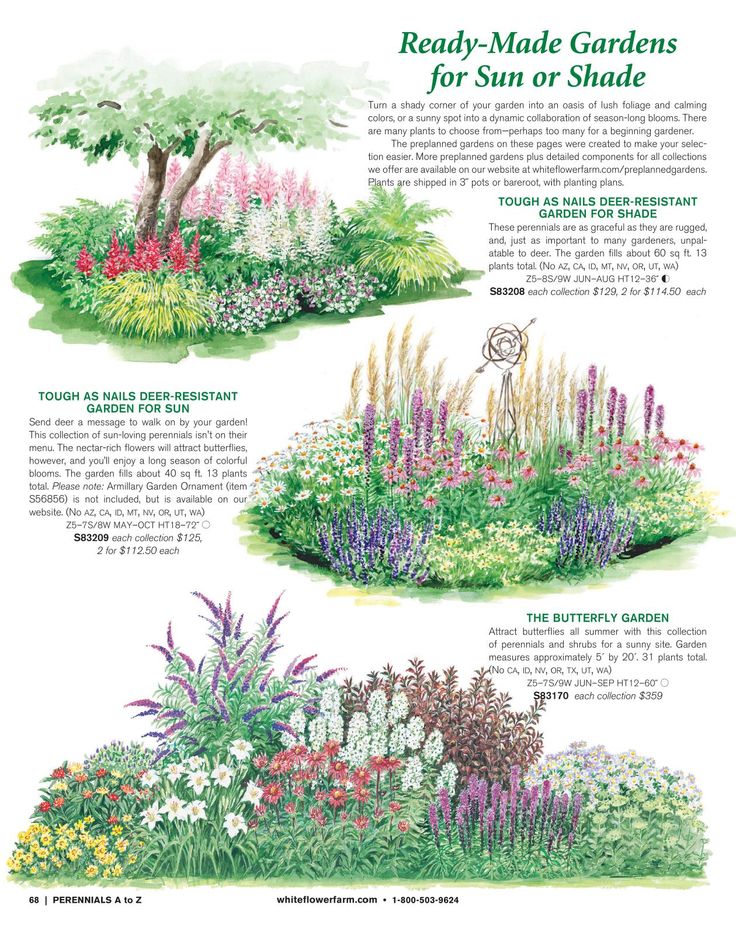
It should be noted that the berries and needles are poisonous to humans and animals.
Yews generally do not like wet conditions.
Taxus x media ‘Tauntonii’ is a dwarf yew that is perfect: it grows slowly, is very tidy and has a very dark green hue.
Taxus cuspidate ‘emerald spreader’ is another good bright green choice that gets denser if pruned annually.
Taxus Canadensis is a tough, small native shrub that will grow in dense shade.
Buy them HERE.*
16 | Boxwood (
Buxus)Zones: 4 to 10
Light: Full shade to full sun
Bloom Time: Foliage only
Height: 1′ to 12′ (depending on the variety)
Spread: 2′ to 8′
The next plant on our list of shade shrubs is Boxwood.
We most often associate Boxwood (Buxus) with clipped hedges and balls in formal gardens.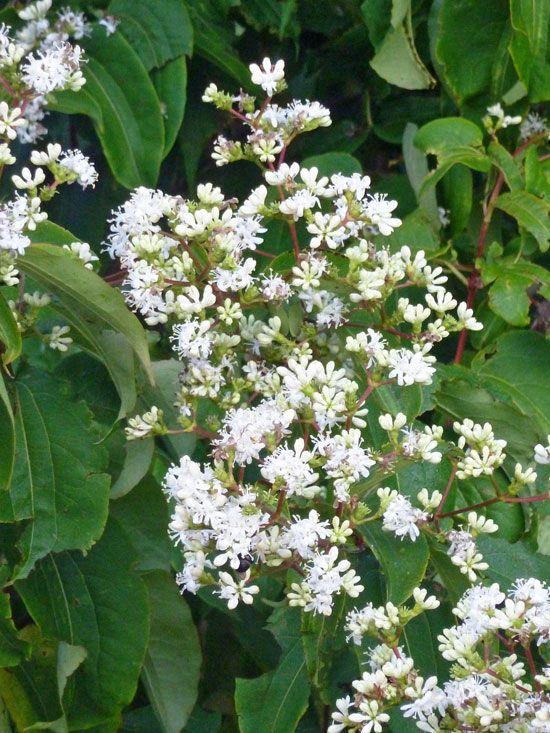
However, it is such an easy plant to grow I think it deserves a place in any kind of border, especially since it is evergreen and grows so well under trees.
Adequate water and 3” of mulch take care of its maintenance needs.
©EDEN – stock.adobe.comAesthetically, Buxus looks much better pruned so that its small evergreen leaves become denser.
It grows slowly, so once the desired shape is established it only needs an annual shearing.
Buy it HERE.*
17 | Anise (
Illicium parviflorum)©Arsgera – stock.adobe.comZones: 7 to 10
Light: Shade to part shade
Bloom Time: Spring
Height: 5′ to 15′
Spread: 5′ to 10′
The last of our bushes that grow in shade is Anise.
With its heat resistance, yellow-green evergreen leaves and small star-shaped fruit, it’s a stand out in the Southern shade garden.
Anise is an easy to care for bush that likes moist soil but will tolerate some drought once established.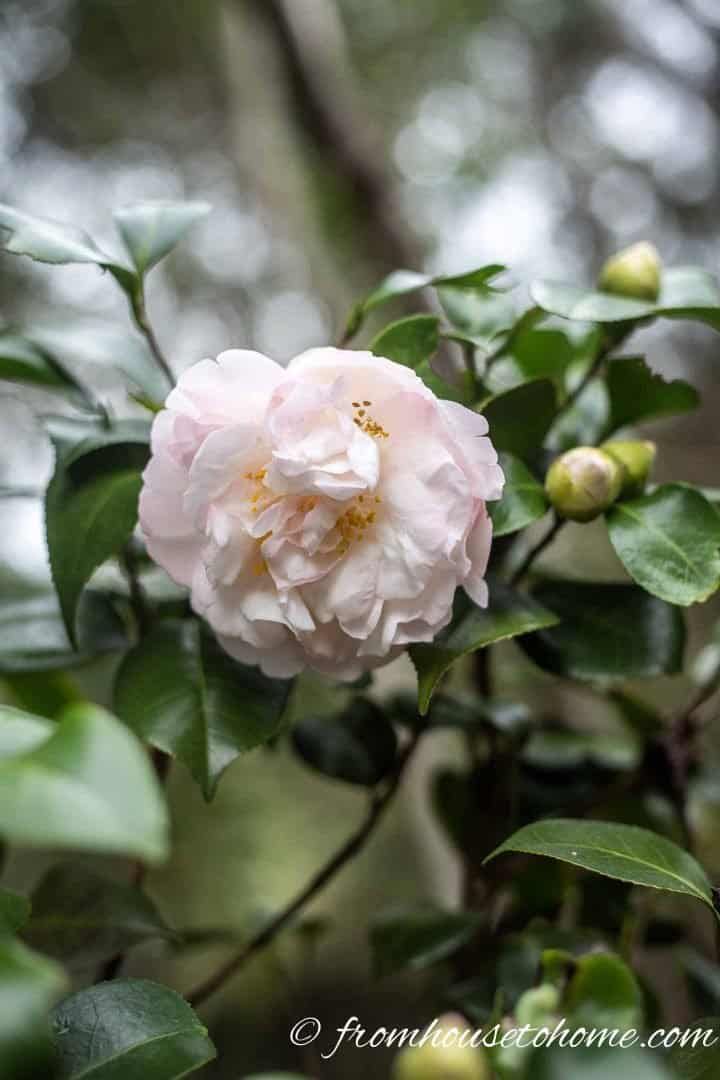
Buy it HERE.*
Other shade plants you might like
- The best evergreen shrubs for shade
- 10 tall flowering perennials that bloom in the shade
- 21 ground cover perennials for shade
- The best blue flowering annuals for shade
Do you have comments or questions on our list of shade loving shrubs? Tell us in the section below.
Pin It So You Don't Forget It!
This post was originally published on October 20, 2018 but was updated with new content on June 14, 2022.
Sharing is caring!
Best shrubs for shade: 13 options for full or partial shade
(Image credit: Leigh Clapp)
There are many choices of shrubs for shade that thrive in full or part shade so you don't need to ignore darker borders and corners of the garden and relegate them to storage areas, but instead you can make the most of them by adding interest and color through considered planting.
The best shade plants can offer changeable interest throughout the year, and working with shifting levels of light and shade is something that every gardener needs to learn and understand.
Instead of seeing shady backyards as a challenge, discover the potential you have to create wonderful contrasts as part of your backyard ideas. White or pale flowers and golden or silvered variegated leaves juxtaposed with darker green foliage and shade, create the effect of light among the shadows, one of the dramatic planting possibilities for white garden ideas.
Best shrubs for shade
(Image credit: Getty Images)
The deciduous or evergreen shrubs you choose for shady spots will differ depending on the type of shade you have in your backyard – so study its patterns at different times of day through the seasons. Smaller spaces might be in shade throughout the day; other backyards might only be in shade for part of the day, so the shrubs might have to be sun-tolerant, too. Decide whether areas are in light, semi, dappled or deep shade. For woodland areas, there are many woodland plants that are suited to the specific conditions under trees.
'The main thing about planting shrubs for shade is whether the specific plant is a full shade or partial shade loving plant,' explains Fiona Martin of Burncoose Nurseries .
‘Some shade-loving shrubs, such as the evergreen silk tassel bush, don’t like to be in deep shade, whereas others like Fatsia japonica can cope with full shade,’ explains award-winning garden designer Jonathan Snow .
Then assess the soil. 'Does the area have dry soil or wet soil and compare this to the soil requirements for the chosen shrub,' adds Fiona.
Below, we bring you the best shrubs for shade, and explain which type of shade they will enjoy.
1. Best shrubs for shade for small gardens
(Image credit: Getty Images)
With a wide range of species, both deciduous and evergreen, which flower at different times, daphne offer lots of variety and the blooms have a powerful fragrance.
They grow well in partial shade and are not large shrubs so are also well suited to shady spots in small gardens.
There are many varieties of daphne that flower in winter, adding much needed color as a winter garden idea, while others flower in spring or summer.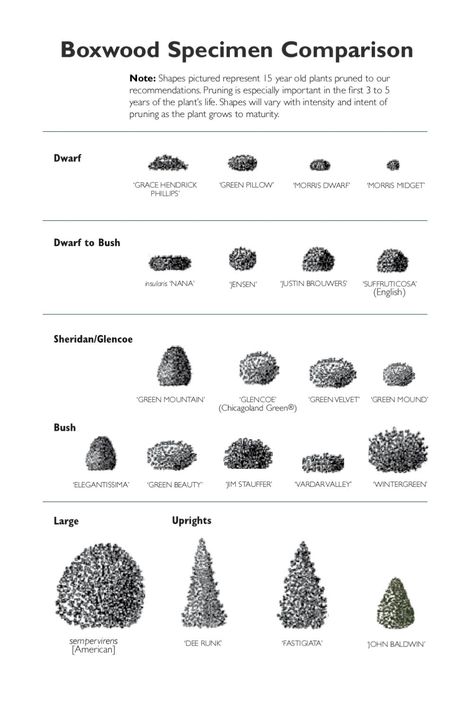
2. Best shrubs for shade for winter interest
(Image credit: Leigh Clapp)
Witch hazel, or hamamelis, is a tall flowering shrub that will add some welcome color to your backyard in winter in areas of partial shade.
A early bloomer, the fragrant flowers on this shrub for shade appear from December through to early spring depending on the hardiness zone where you live.
'It has distinctive spider-like flowers in shades of yellow, red and orange,' explain the experts at Hillier garden centers.
Witch hazel needs to be pruned regularly to keep it in check otherwise it can grow a little unruly. For the most economic option, plant them bare root in fall.
3. Best shrub for shade for hedging
(Image credit: Future / Rowan Isaac)
Great to plant in a shady spot for a privacy hedge, yew, or Taxus baccata, is an enduringly popular choice and it is easy to see why. It will grow happily in many locations – from full shade to full sun – is a dense and quick grower, and can live for many, many years.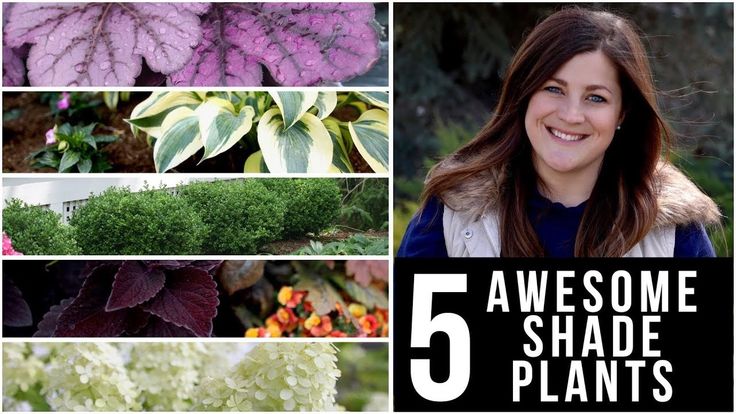
This shrub for shade works brilliantly as a backdrop to white flowers in a shady corner, and can be clipped into beautiful shapes and lines.
4. Best shrubs for shade for late summer blooms
(Image credit: Future)
Hydrangeas are well known and loved and there are many varieties to choose from that will cope well in a shady position. They are also one of the best flowering shrubs.
'Hydrangea aspera ‘Villosa Group’ is my favorite hydrangea with its large pointed velvet leaves and late summer blue flowers. It can also be grown on chalk,’ explains Jonathan.
The deciduous shrub does well in partial shade, but learn how to prune hydrangeas to keep them flowering well and stop them becoming scruffy and unkempt.
5. Best shrubs for shade with fragrant flowers
(Image credit: RHS/ Anna Brockman)
Shade loving plants often have the most fragrant blooms, as if the plants are trying to compensate for their lack of sunshine and color, so are ideal for sensory garden ideas.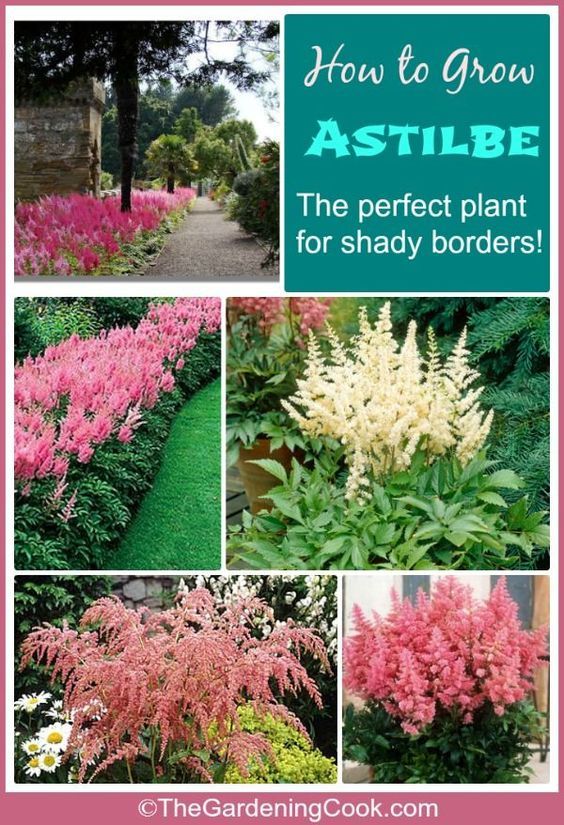
'Sarcococca hookeriana ‘winter gem’, also known as sweet box, has attractive, evergreen glossy leaves and highly fragrant white late winter flowers and berries,' explains Fiona Martin.
The dwarf shrub will tolerate full shade and brighten up dull corners where little else will grow.
'It is tough and tolerant of most conditions,' advise the experts at RHS Plants .
6. Best shrub for shade with bright flowers
(Image credit: Getty Images)
Mahonia repens is a frost hardy dwarf evergreen shrub that tolerates full to part shade.
‘It’s main attraction, though, is its dark yellow racemes of upright flowers in mid to late spring, followed by blue-black berries. Shrubs with lighter color flowers can really brighten up a shady area, especially white and yellow flowers,' says Fiona Martin.
Fully frost hardy, these low growing mahonias, which typically only grow to one or two feet in height, can be used for ground cover.
7. Best low maintenance shrub for shade
(Image credit: Getty Images)
'Fatsia japonica can cope with full shade as well as a bit of sun, and a fair amount of general neglect, too,' explains Jonathan, so it is a good choice if you're looking for low maintenance shrubs or fast growing shrubs for shade.
'It has architectural, evergreen leaves, and striking panicles of spherical, creamy white flowers in fall, which are often followed by round, black fruit in winter,’ adds Jonathan.
Both the flowers and berries are a valuable food source for beneficial insects, especially as they are produced in the middle of winter when not much else is on offer, so are also great for adding to planting plans for wildlife garden ideas.
8. Best shrubs for shade with variegated leaves
(Image credit: Getty Images)
Aucuba japonica ‘crotonifolia’, also known as Japanese or spotted laurel, can grow in partial or full shade.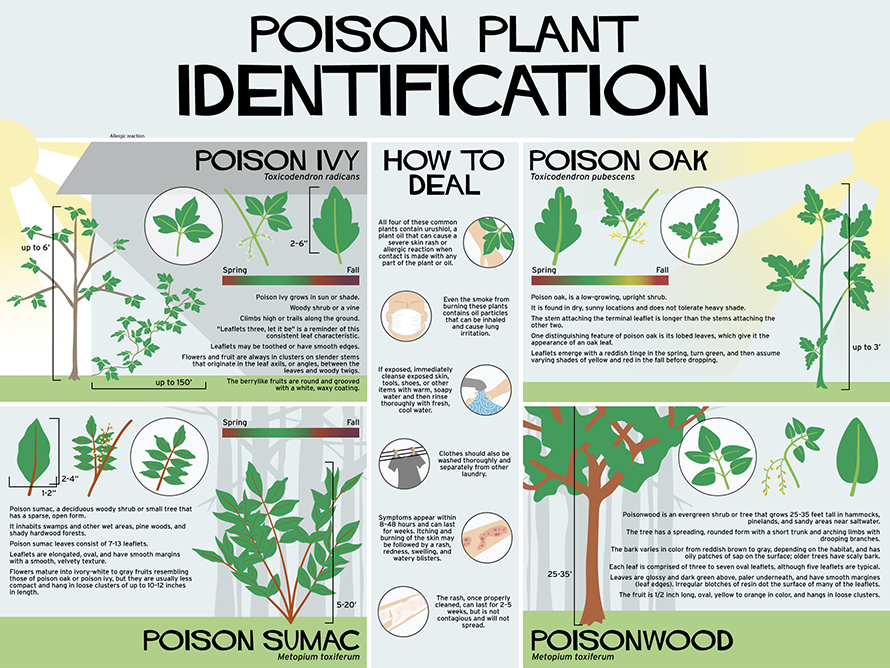
‘The rounded shrub has spotted, variegated leaves and produces bright red berries in fall,’ explains Fiona. They like moist, well-drained soil.
Partial shade is best for more pronounced variegation of this pretty evergreen plant, which can provide a lovely backdrop in a shady corner of a backyard.
'Aucubas may not be the most standout plants, but they make a very effective and dense windbreak and can tolerate high, salt-laden winds,' explains Fiona, so are a good option for exposed and coastal gardens.
Growing up to 15 feet tall, they are also good for use as fast growing hedges.
9. Best long living shrubs for shade
(Image credit: Crocus)
For some classic, traditional blooms, you can't get much better than long lasting and low maintenance camellias as shrubs for shade – which we think are among the best shrubs for the front of the house.
'One of my favorites is Camellia sasanqua. I find this fall flowering camellia so much more delicate, in leaf and flower, than its blousy spring cousins,’ says Jonathan.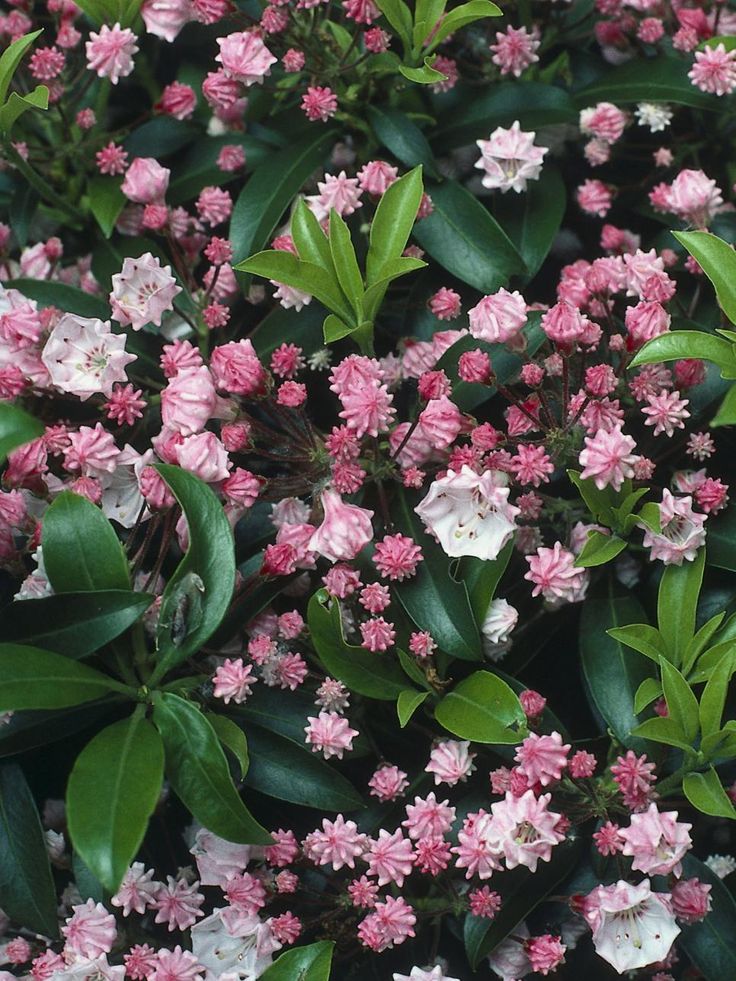
If you are growing camellias they prefer moist, rich, acidic soil and thrive in full to partial shade. To maximize their flowering potential, learn how to prune camellias and you will be rewarded with their beautiful blooms for many years.
'This camellia makes a handsome stand-alone specimen, but it can also be used to make a dense, informal screen,' advise the experts at Crocus .
10. Best easy to grow shrub for shade
(Image credit: Getty Images)
The Silk tassel bush or Garrya elliptica is known for its showy cascading flowers or catkins in winter or early spring.
A native to the coastal ranges in California and Oregon, 'this easy to grow evergreen shrub will grow in most soil types, but prefers to be out of the wind, and not in deep shade,' advises Jonathan.
It makes a striking backdrop to many other plants and grows well in partial shade.
11. Best large shrubs for shade
(Image credit: Gina Kelly / Alamy Stock Photo)
Woodland plants, rhododendrons grow well in dappled shade.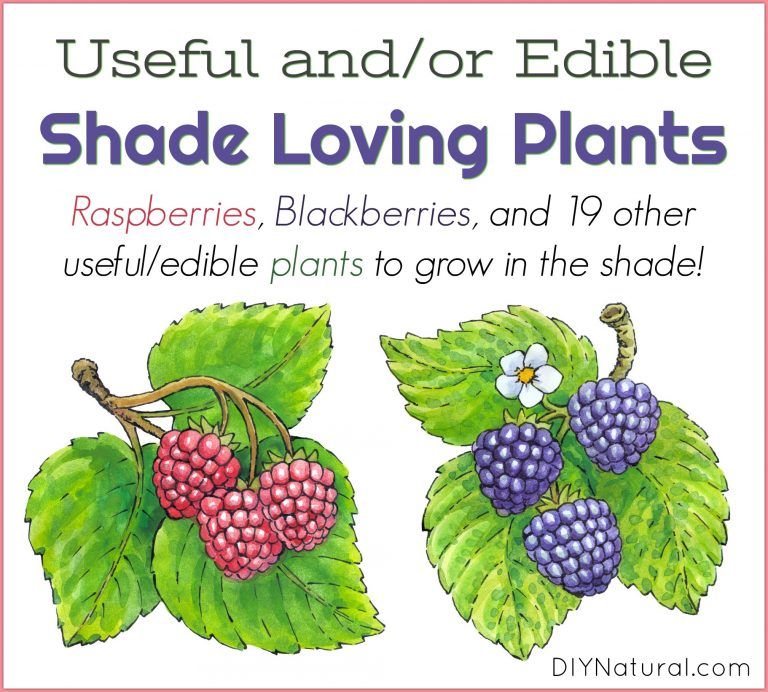
Suited to USDA hardiness zones 4 to 8, these large growing evergreens flower from spring through to summer filling shady spots in the garden with colors ranging from deep red through to white.
It is easy to learn how to grow rhododendrons. 'Rhododendron ‘Cunninghams White’, is a reliable, free flowering rhododendron with mauve buds that open to white flowers with a pale yellow center in spring,' explains Jonathan
'It can tolerate a wide range of soil conditions, unlike most rhododendrons that prefer acidic soil,' he adds.
Pruning rhododendrons will keep them well shaped and blooming well.
12. Best shrub for shade with changing leaf color
(Image credit: Alamy)
A great choice for privacy and screening in a backyard, photinia grows well in partial shade and is a low maintenance shrub.
Some varieties have lovely changing foliage color in spring and fall, such as Photinia x fraseri 'Red Robin', which produces bright red new leaves.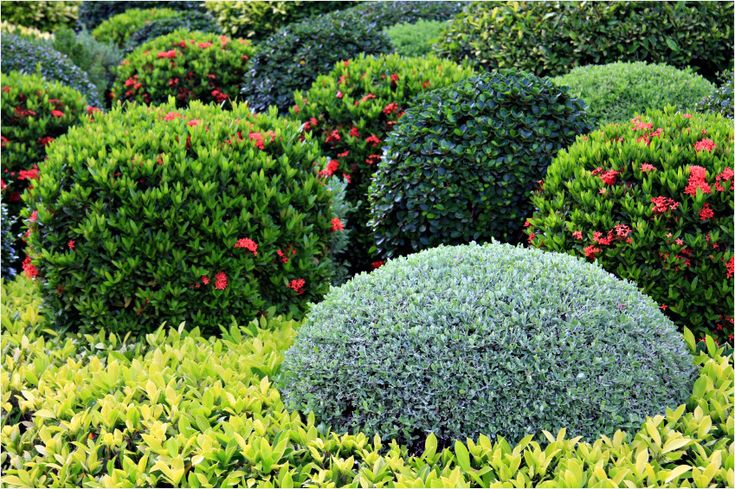
They tolerate most soil types, although will cope best with moist, fertile soil with plenty of organic matter added in.
13. Best climbing shrubs for shade
(Image credit: Getty Images)
If you are looking to cover walls or other vertical structures in a shady corner then Euonymous fortunei is an excellent choice and a good courtyard garden idea for making the most of space available by growing vertically.
Some varieties of these evergreen climbers also have lovely variegated leaves, to bring light and golden accents into a dark space, such as ‘Emerald n Gold’ with its golden variegated leaves.
It copes well in dappled and partial shade.
What evergreen is best for shade?
There are many evergreens that are best for shade, advises Fiona Martin of Burncoose.
These range from Aucuba japonica and some camellias, to common laurel and English yew, to name but a few.
The key is to always do your research before buying a shrub for shade and 'check that the specific plant is a full shade loving shrub,' adds Fiona.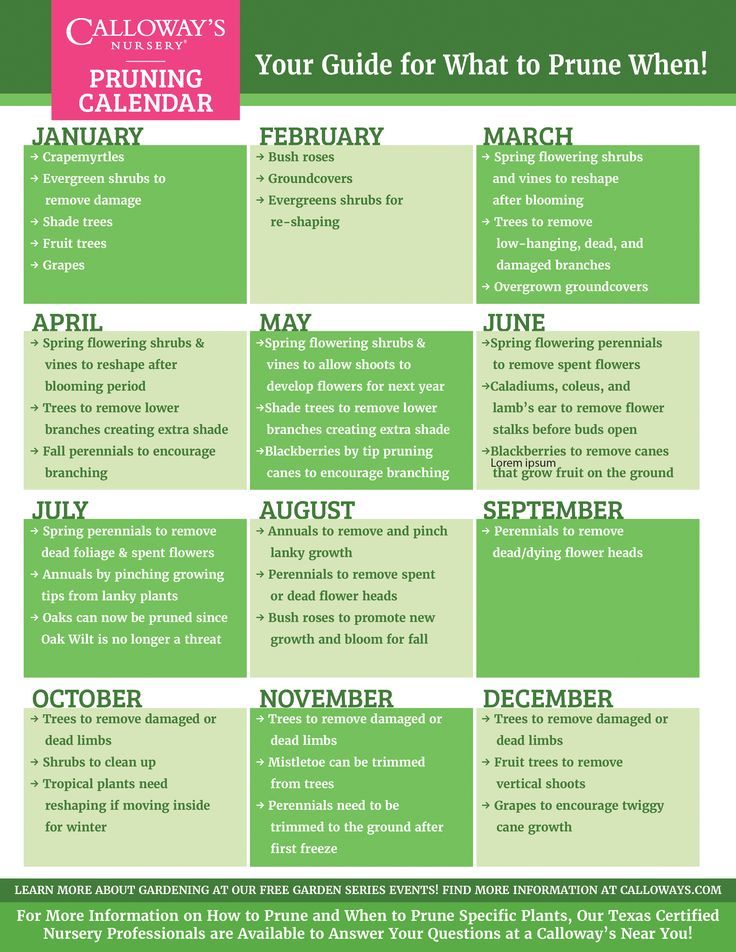
(Image credit: Annaick Guitteny)
Do hydrangeas like sun or shade?
Hydrangeas do tolerate some shade, but to flourish they should also enjoy a bit of – ideally morning – sun.
They will not do well in full shade, however, so get to grips with how to grow them and what to plant with hydrangeas so that you get the best from these stunning shrubs for shade.
Can azaleas grow in shade?
If you are growing azaleas, they will cope well with dappled shade, such as along a woodland border, but will struggle in full shade.
Evergreen varieties in particular prefer a shady spot as full sun can scorch their flowers.
Rachel is senior content editor, and writes and commissions gardening content for homesandgardens.com, Homes & Gardens magazine, and its sister titles Period Living Magazine and Country Homes & Interiors. She has written for lifestyle magazines for many years, with a particular focus on gardening, historic houses and arts and crafts, but started out her journalism career in BBC radio, where she enjoyed reporting on and writing programme scripts for all manner of stories. Rachel then moved into regional lifestyle magazines, where the topics she wrote about, and people she interviewed, were as varied and eclectic as they were on radio. Always harboring a passion for homes and gardens, she jumped at the opportunity to work on The English Home and The English Garden magazines for a number of years, before joining the Period Living team, then the wider Homes & Gardens team, specializing in gardens.
Rachel then moved into regional lifestyle magazines, where the topics she wrote about, and people she interviewed, were as varied and eclectic as they were on radio. Always harboring a passion for homes and gardens, she jumped at the opportunity to work on The English Home and The English Garden magazines for a number of years, before joining the Period Living team, then the wider Homes & Gardens team, specializing in gardens.
What shrubs grow in the shade, names, photos, characteristics
Dacha owners want to grow different plants, including large trees that shade part of the area. The desire to beautifully decorate the territory of the site raises the question of which shrubs grow in the shade, which herbs and flowers will serve as companions for them, and help create original compositions in a semi-shaded area.
Contents
- How shade affects the development of shrubs
- Is the intensity of the shadow
- is there any advantages for the shaded area
- What varieties of shade -tolerant shrubs are planted in the garden
- How to choose shade -tolerant decorative shrubs
- Rhododendar
- 9000 9000 9000 9000 9000 9000 9000 9000 9000 9000 9000 9000 9000 9000 9000 9000
- Derain white
- Honeysuckle
- Barberry
- Gooseberry
.

Light-loving crops, when planted in a shaded area, feel uncomfortable, their growth and development slow down, budding on them is weak, the color of the leaves becomes faded, or even completely changes.
Shade-loving ones can hardly stand bright light, suffer from the sun's rays that burn the foliage, and eventually dry up.
Does the intensity of the shade matter
Which shrubs grow in the shade is the main question that we will consider, but before proceeding to it, it should be clarified that the shade can be different. According to the quality of the shade, the choice of plants is made.
Shady corners of the site can be divided into several types:
- with an openwork shadow - when the sun's rays lightly break through the crown of the tree;
- semi-shaded - illuminated by the sun for several hours a day, in the morning or evening;
- shaded - if the sun does not hit the site for more than 2-3 hours a day, taking into account the time from sunrise to sunset;
- with a deep shadow - if the sun's rays do not fall on the site, or illuminate the area for a short period of time, for example: the north side of the house, a dense spruce forest on the south side of the site.
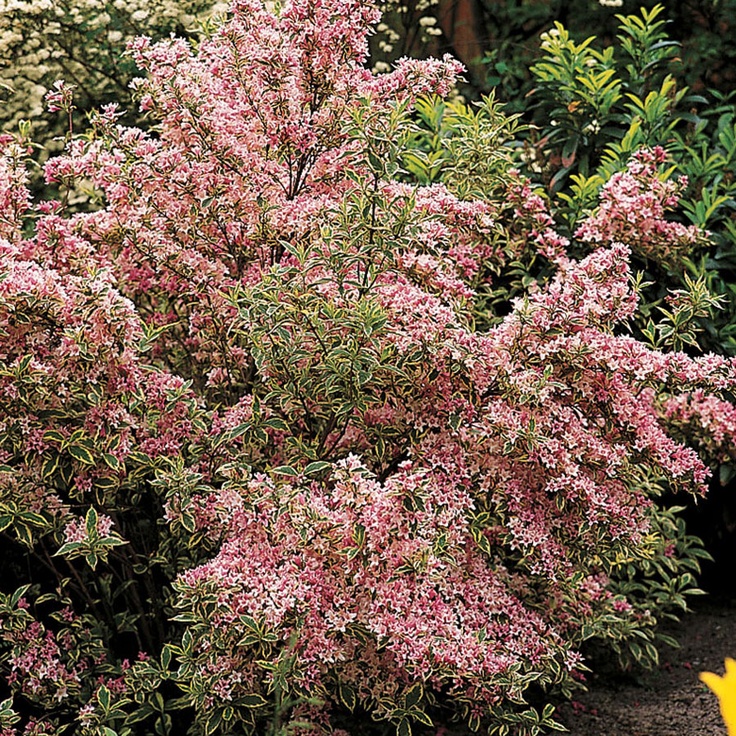
Are there any advantages to a shaded area?
The range of plants used to improve a shaded area is wide, but to get the desired result, you need to take into account:
the need to equip a drainage system for too wet and heavy soils. Pebbles or pieces of brick laid on the bottom of the planting holes can be used as drainage.
Depending on the parameters of the shaded area, it can be wet or dry. To select suitable shrubs, you need to determine the type of shade and select varieties accordingly.
If the shaded area is occupied by large fruit or ornamental trees, then the shade will be dry, because large plants have a strong root system and are able to pump water out of the soil, and with it nutrients.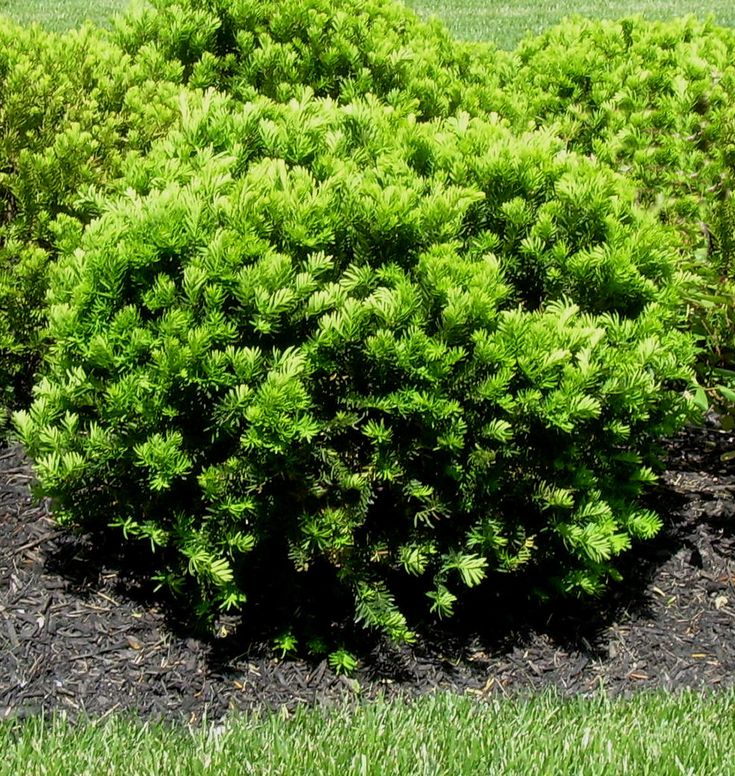 Wet shade is formed on dense soils in the absence of drainage.
Wet shade is formed on dense soils in the absence of drainage.
What varieties of shade-tolerant shrubs are planted in the garden
The list of plants that do well in shady areas is quite long and allows you to apply different techniques to create different styles of landscape design. Shrubs are used for the following purposes:
- garden ornaments;
- providing a decorative background for small flowers or ornamental grasses;
- hedge construction.
Ornamental shrubs, which are commonly used in landscape design, are divided into 2 groups:
- deciduous, attracting attention with unusual color and leaf shape;
- characterized by spectacular long flowering.
Let's watch a useful video about which shrubs grow in the shade:
How to choose shade-tolerant ornamental shrubs
To determine which shade-tolerant plants will suit the site, study their characteristics and visual assessment of the photos on which they are depicted.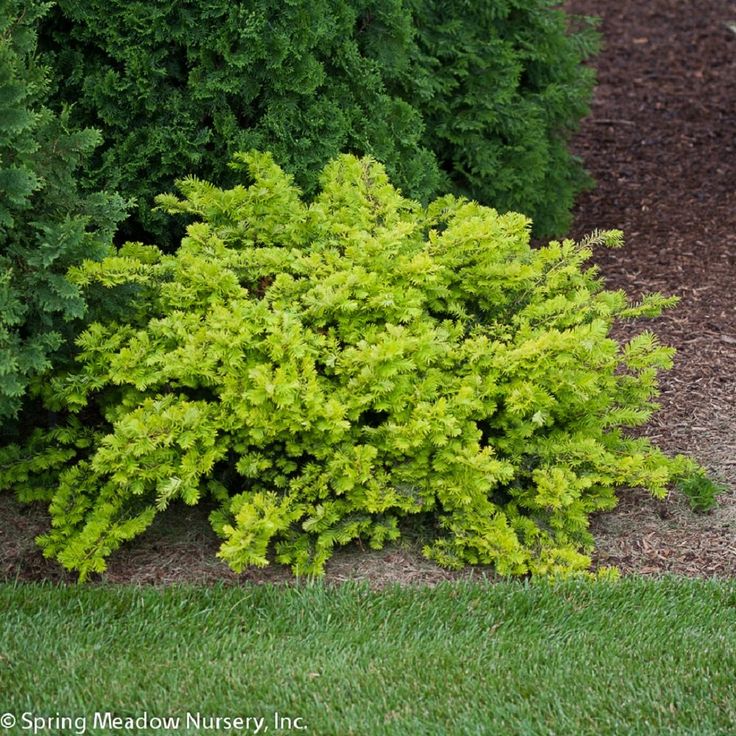
Let's present the most popular varieties that surprise with their decorative effect and attract with relative ease of care.
Rhododendron
This representative of the Heather family looks beautiful during the flowering period, pink or lilac petals of its inflorescences, densely covering the branches, have a bright color. Dense, fleshy leaves, oval or ovoid in shape, look attractive.
Rhododendrons are very hardy, easily enduring conditions of heavy shading, in which other species will wither and eventually die. However, for bushes, it is preferable to choose semi-shaded areas with drained soil. It is advisable to provide for the possibility of watering plantings during a period of severe drought.
Rhododendrons are used for planting along garden paths, they look great against the background of conifers or building walls.
Garden jasmine or mock orange
Very popular plant, readily grown by gardeners. The view is attractive, the flowers are bright, large, have an amazing aroma, which fills the entire garden during the flowering period.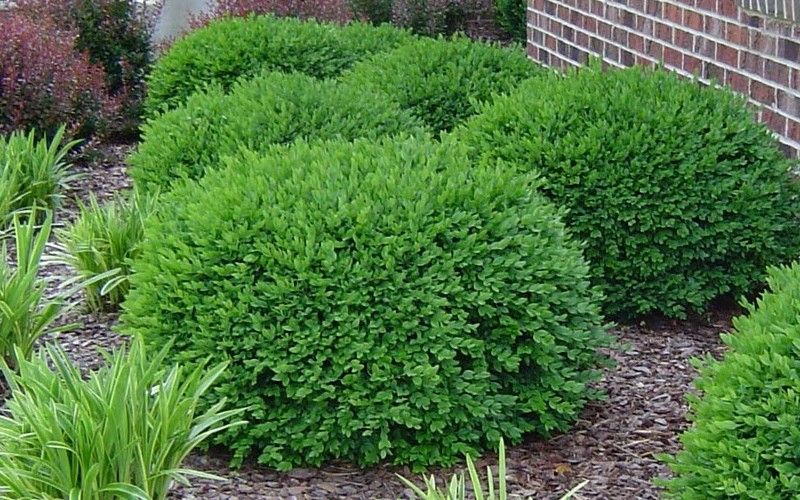
Shrub does not require quality soil, can adapt to life in any conditions. The plant is frost-resistant, in summer it can withstand prolonged drought. The procedure for caring for jasmine practically consists in correct and fairly frequent pruning and pruning of bushes. Dense plantings are used to create hedges.
But if you want to admire the lush flowering of mock orange, then you can observe it if the bushes are planted in partial shade, in conditions of deep shade, flowering will not be plentiful. In addition, many varieties of garden jasmine have been bred today; when choosing, you should take into account the peculiarities of the climatic conditions of your area of residence.
Cotoneaster
Ornamental plant resistant to adverse living conditions, it can be grown on shady areas, even in cities where the air is characterized by increased gas content.
Cotoneaster branches are densely covered with dark green leaves that turn red in autumn.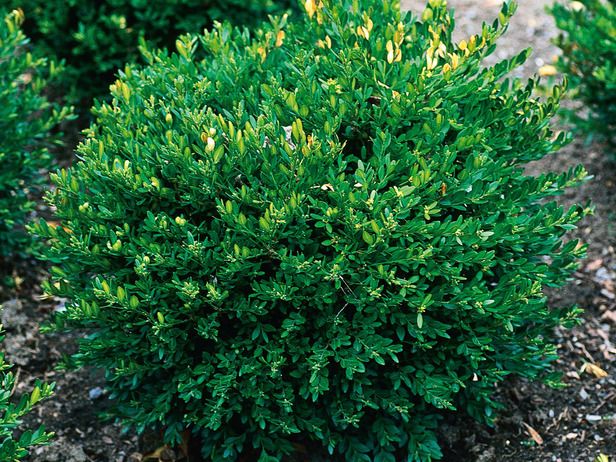 The bushes have a beautiful dense crown, designers prefer to use it when creating a hedge.
The bushes have a beautiful dense crown, designers prefer to use it when creating a hedge.
In addition, bushes lend themselves well to shaping. When creating garden compositions, both erect and creeping plant varieties are used.
Flowering shrub, flower petals in different varieties may be white or pink, the flowers themselves may be collected in racemes or solitary. Cotoneaster fruits are bright, black or red.
Gotensia
Shrub considered one of the most common and popular in the world. In the conditions of the middle lane, dozens of frost-resistant varieties are grown.
Hydrangea is planted in sunny and shaded areas, provided that there is enough nutrient soil. It is necessary to provide for the possibility of irrigation, because. hydrangea is very sensitive to soil moisture.
The plant is characterized by long flowering, and the flowers at different stages of flowering have a different color, at first the petals of hydrangea paniculata lettuce, then white, at the end of flowering they become a delicate pink color.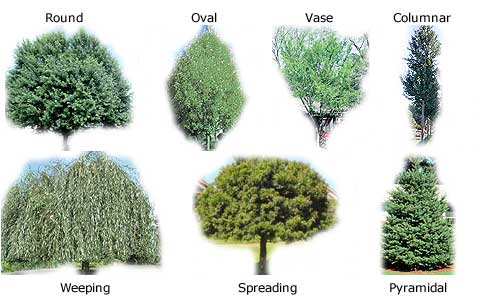
Kalynolistny vesicle
This shrub is the undoubted leader in the number of varieties, in its description they usually emphasize decorativeness, unpretentiousness, suitability for growing in urban conditions are distinguished among the quality characteristics.
A spherical vesicle bush covered with corrugated leaves and lush clusters of flowers looks luxurious, the seeds of the plant ripening in boxes look no less attractive against the background of the leaves. Among the latest achievements of breeders, it should be noted new varieties that are distinguished by a unique foliage color: purple and golden yellow.
Derain white
The plant attracts attention with beautiful leaves with a white border along the edge. The bright color of the leaves does not fade in the shade; by autumn, pink and apricot shades are added to the color scheme of the leaves. The decorativeness of the plant is not lost in winter, its red shoots look very bright against the background of snow.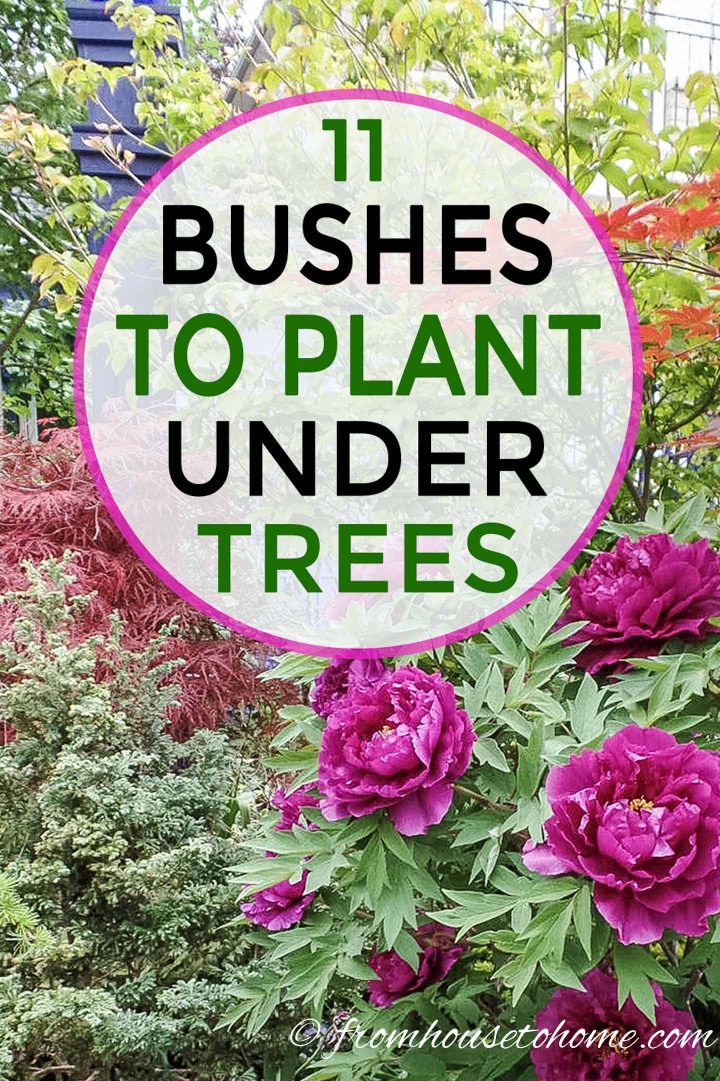
Deren is not picky about the quality of lighting and is resistant to winter frosts, but it needs moist nutrient soil for active growth.
Some turf varieties are tall, but shaping their shape and size is not at all difficult, the plant tolerates pruning well.
For more information about the best shade-tolerant garden plants, watch the video:
Does it make sense to consider planting fruit-bearing shrubs in shady areas
Yes, some fruit-bearing shrubs can be grown in shady conditions. Consider the descriptions of the most unpretentious plants.
Honeysuckle
This fruit-bearing shrub owes its popularity to its hardiness, it can grow normally in shady areas, it is not demanding on soil quality, it is resistant to polluted air, which allows it to be grown in urban conditions.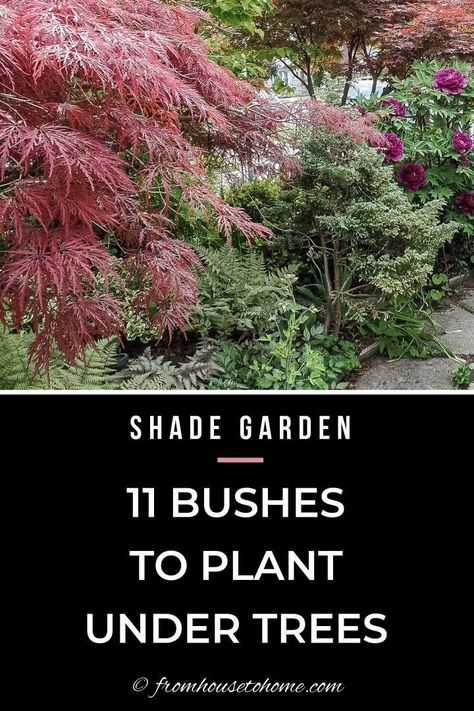
There are a lot of varieties of honeysuckle today, so the shrub can have quite large differences in the color of the leaves and flowers, the fruits can also differ in shape and ripening time.
It should be remembered that some varieties of honeysuckle, for example, Honeysuckle, are suitable for growing in good light, others (Tatarskaya) withstand moderate shading well.
Honeysuckle is used for single plantings, vertical gardening, for arranging hedges.
Barberry
The plant is fast growing and highly resistant to frost. The bushes do not require special care, the plant can withstand even severe droughts.
The leaves of the barberry are small, beautifully shaped, green in summer, changing color to burgundy in autumn.
The Thunberg barberry variety has a burgundy leaf color throughout the summer, and the Thunberg barberry Goldalita has golden yellow leaves.
Barberry berries have a pleasant aroma and excellent taste and are used in cooking, especially in oriental cuisine recipes.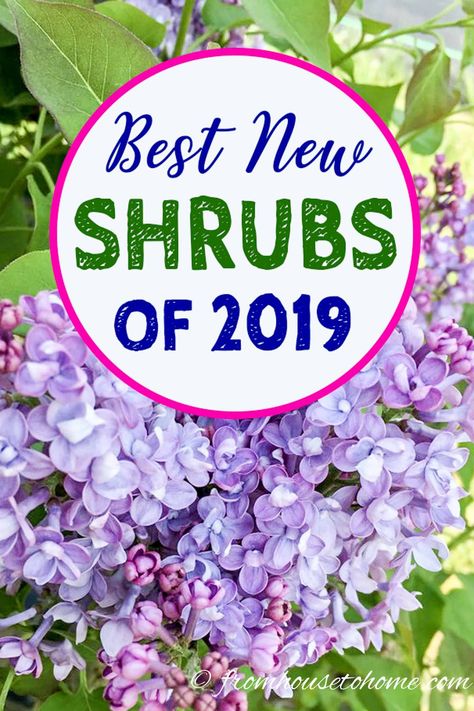
Gooseberry
It can be grown in sunny or shaded areas. The plant does not need frequent watering, it easily tolerates short droughts.
Gooseberries in the process of ripening acquire a yellow or reddish hue, become translucent.
The fruits are used in cooking, they are used to make compotes and jams.
Which companion plants can be planted in shady corners of the garden
Planting shrubs alone is not enough to create beautiful corners in the shady part of the garden.
You will need to select small plants that will allow you to maintain the decorativeness of the site throughout the summer season.
Let's note the most popular ones and give a brief description of them.
Climbing plants in natural conditions are undergrowth plants, so there is no doubt about their shade tolerance. Liana-like are used to decorate arbors and pergolas, verandas.
Popular plants in this group are parthenocissus, kirkazon and knyazhik.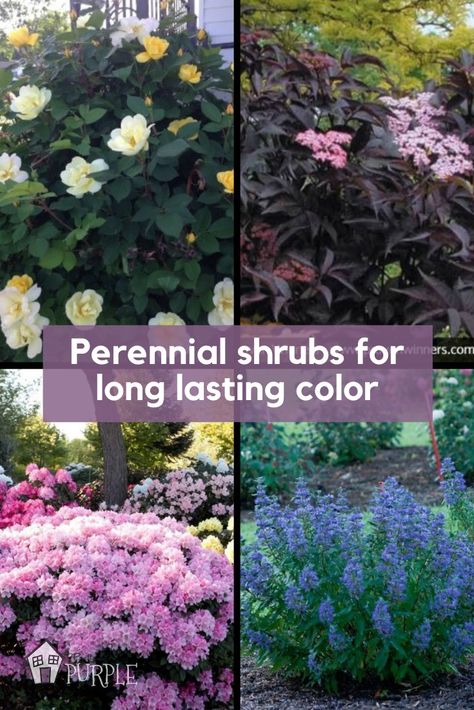 They grow quickly and are able to form dense thickets. The attention of the owners of suburban areas is often attracted by girlish grapes, whose leaves turn bright red-orange hues in autumn.
They grow quickly and are able to form dense thickets. The attention of the owners of suburban areas is often attracted by girlish grapes, whose leaves turn bright red-orange hues in autumn.
Ferns, depending on the varieties, differ in size, but their leaves have a clear graphic and volume, which allows you to get a background for flowering shrubs.
No less interesting in compositions with shrubs are hostas.
They withstand the shading of the site. It is noteworthy that the plant is represented by numerous varieties, gardeners can pick up bushes with a height of 10 to 60 cm. Hostas go well with ferns.
Ground cover plants are planted to create a carpet under the trees. Saxifrage, periwinkle, lungwort are decorative, develop well in the shade.
Shade is tolerated from flowering annual crops:
- mattiola and fragrant tobacco;
- geraniums and forget-me-nots:
- rudbeckia.
Bulbs can also be planted in the shade of the trees, as crocuses, daffodils and tulips begin to bloom before the trees have even leafed out.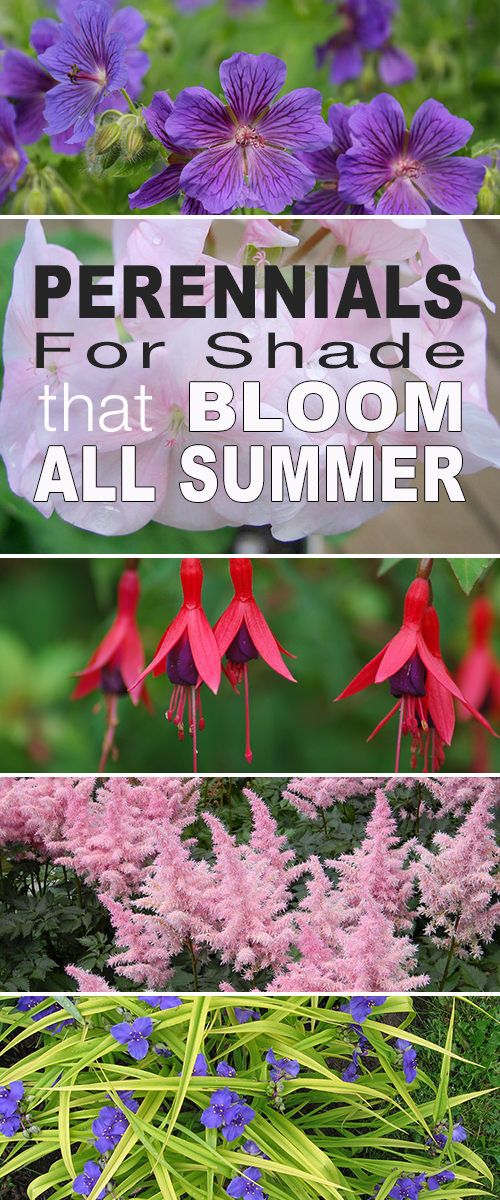
Although most cereals prefer the sun. in the penumbra take root:
- spreading forest and hedgehog team;
- meadow foxtail and soddy pike.
Considering which shrubs grow in the shade, we remembered the most popular plants that require minimal care. But in order to get not only decorative greenery, but active flowering and fruiting, of course, you will need to organize proper plant care.
Shade-loving perennial garden shrubs, photos and names
It happens that on the territory of a dacha or garden area there are shaded places. And yet there are not so many well-lit places. The reasons for the fact that there are many shaded places on the site can be very different. So, for example, shrubs and trees grow on it in large numbers. They, of course, give delicious fruits and berries, but they take up a lot of space and cast a rather voluminous shadow. Therefore, the plants growing under them are almost completely devoid of sunlight.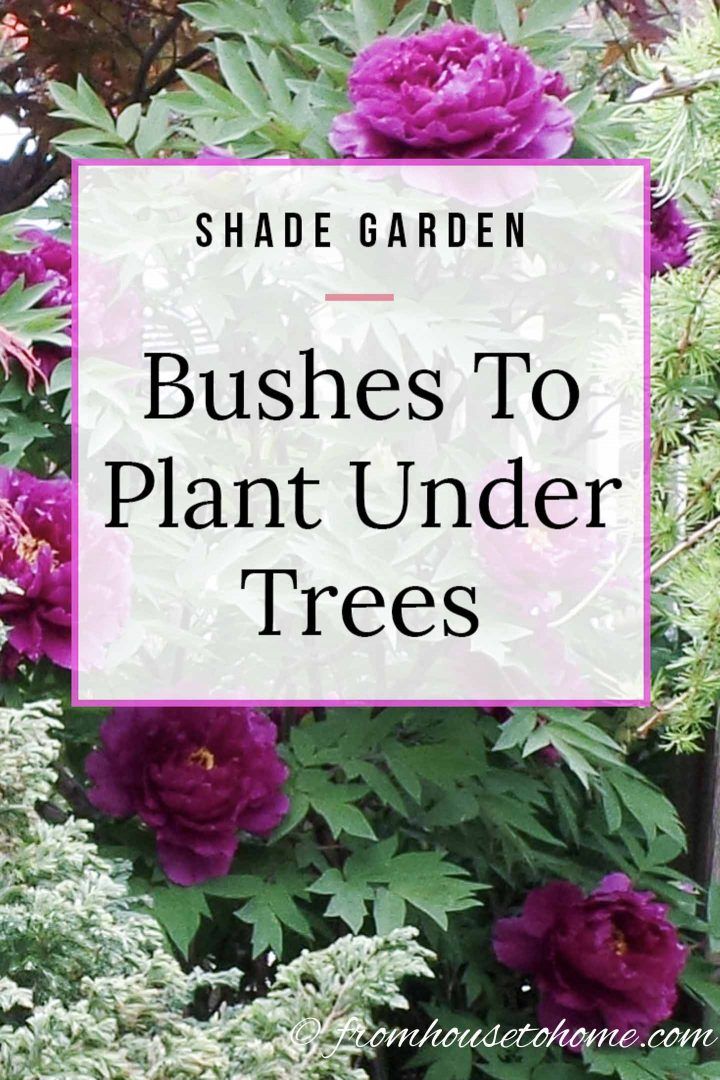 However, few summer residents do not want the entire summer cottage to be beautiful and originally designed. The way out of this situation is very simple. So, in shady places, you only need to plant shade-loving perennial shrubs for the garden.
However, few summer residents do not want the entire summer cottage to be beautiful and originally designed. The way out of this situation is very simple. So, in shady places, you only need to plant shade-loving perennial shrubs for the garden.
Content
- 1 How to choose shade -tolerant shrubs for the garden
- 2 Shadow -bearing flowering shrubs
- 9000 2.1 Rhododendron
- 2.2 Garden Jasmine
- 4.1 Forsythia
- 4.2 Euonymus
- 4.3 Mahonia
How to choose shade-tolerant shrubs for the garden
Shade-tolerant perennial shrubs are conditionally divided into 3 different groups, namely: berry, flowering, and decorative foliage. Each of these plants has both certain pluses and minuses. And there are also such types of shrubs that not only look very impressive, but also give useful, fragrant and incredibly tasty fruits. Experienced gardeners and summer residents categorically do not recommend buying planting material in spontaneous markets, as there is a high probability that it will be of very low quality. It is best to purchase seedlings in special stores that have a good reputation. Among the various types of shrubs, the most popular and common can be distinguished.
Experienced gardeners and summer residents categorically do not recommend buying planting material in spontaneous markets, as there is a high probability that it will be of very low quality. It is best to purchase seedlings in special stores that have a good reputation. Among the various types of shrubs, the most popular and common can be distinguished.
Shade-tolerant flowering shrubs
Rhododendron
Such a shrub has a very spectacular appearance, especially during the flowering period, when it is almost completely covered with inflorescences consisting of flowers of a rich color. Its leaf blades are fleshy. Rhododendron thrives in the shading created by tall trees and shrubs, in which many other plants can simply die.
Garden jasmine
This shrub is very popular with gardeners and summer residents. Such a very beautiful plant will be an excellent decoration for almost any site. Jasmine looks especially impressive in the process of flowering.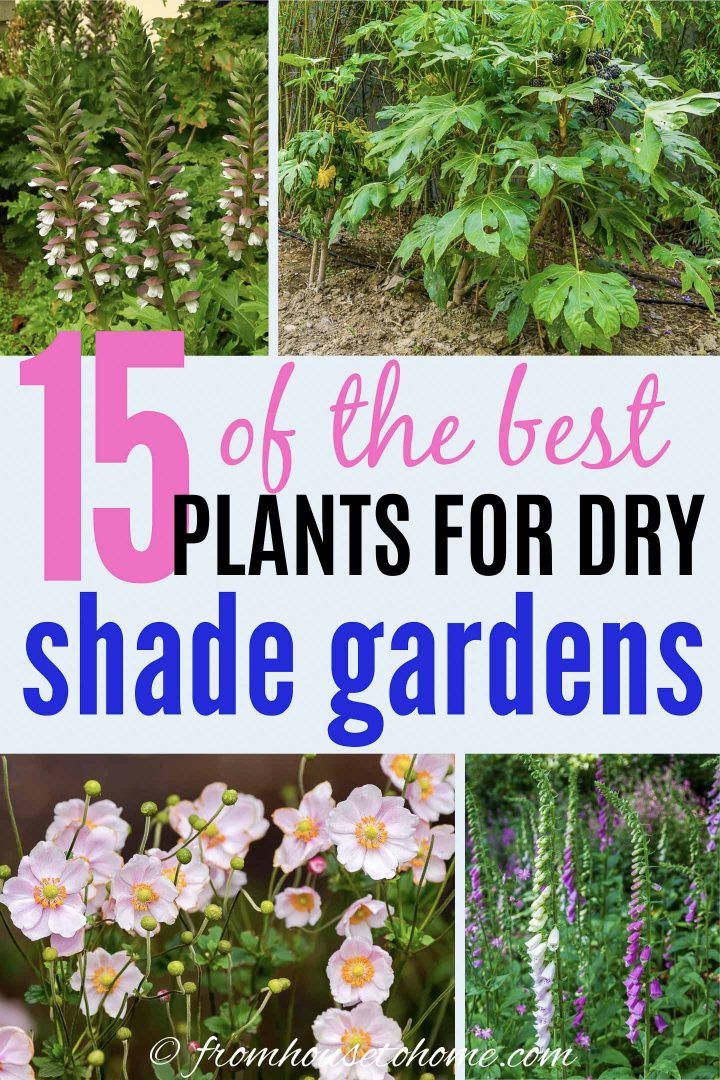 At this time, its branches are covered with snow-white lush inflorescences, from which a very pleasant and rather strong smell emanates. An important advantage of such a shrub is its undemanding to the place of growth, as well as to the quality of the soil. Garden jasmine can adapt to absolutely any growing conditions. So, he perfectly withstands dry periods, and he is also not afraid of quite frosty winters. However, in order for your site to be decorated with a compact and neat bush, it will need to be cut systematically and often enough.
At this time, its branches are covered with snow-white lush inflorescences, from which a very pleasant and rather strong smell emanates. An important advantage of such a shrub is its undemanding to the place of growth, as well as to the quality of the soil. Garden jasmine can adapt to absolutely any growing conditions. So, he perfectly withstands dry periods, and he is also not afraid of quite frosty winters. However, in order for your site to be decorated with a compact and neat bush, it will need to be cut systematically and often enough.
Shade-tolerant berry bushes
Such perennial plants are suitable for those gardeners and summer residents who want the plants grown by them to be not only very beautiful, but also bring certain benefits.
Barberry
This shrub is quite popular in Eastern countries. It is fast growing and frost resistant. It is quite easy to care for him, and he also tolerates a dry period perfectly. Such a shrub has small, very beautiful leaf plates, which in the fall change their green color to rich burgundy.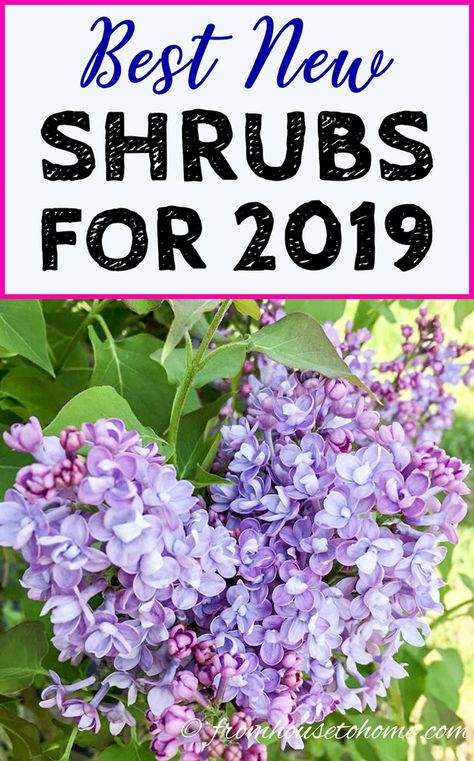 The barberry grows berries with high palatability. They are used in cooking to prepare a variety of dishes.
The barberry grows berries with high palatability. They are used in cooking to prepare a variety of dishes.
Gooseberry
It can grow in both sunny and shaded places. And such a shrub needs to be watered quite rarely and moderately, while it can withstand a dry period. Very tasty berries grow on the plant, which are often used to make jam.
Hazel
This plant prefers to grow only on non-acid soil. If the soil is acidic, then it is recommended to add sand to it. Quite tasty nuts grow on hazel.
Shade-tolerant ornamental foliage plants
This group includes many plants. Here is some of them.
Forsythia
This plant has showy leaves of intense lemon color. It can be planted both together with other shrubs, and singly. It is frost- and drought-resistant, and also unpretentious in care.
Euonymus
This shrub grows very fast and does not require special care. In winter, it also looks quite impressive.